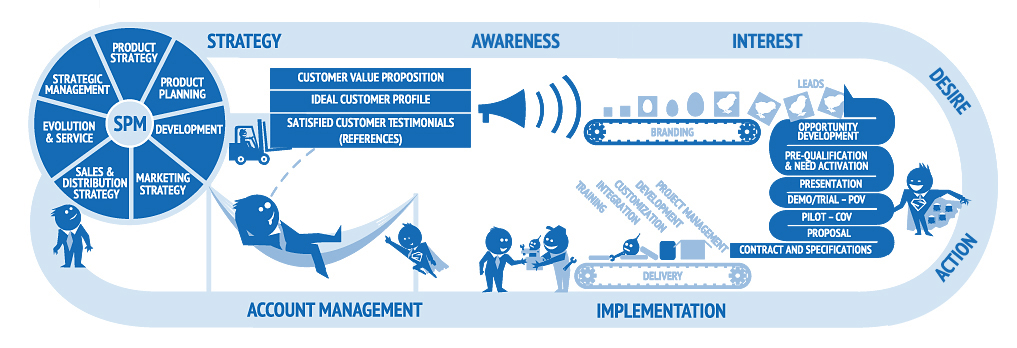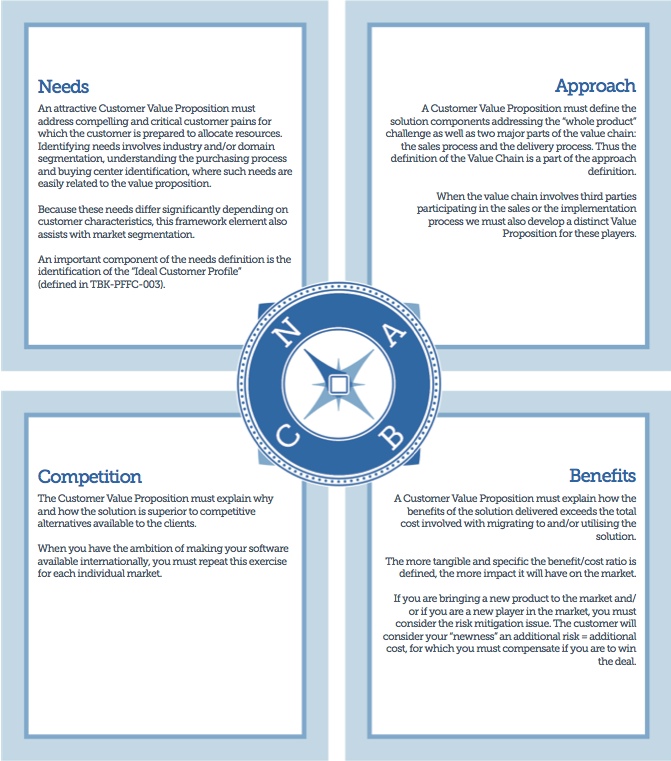Ready for 2012? – Part 5
This is the 5th in a series of blog posts under the main headline “Ready for 2012?”
It is addressing the #1 headache of any growing Independent Software Vendor: How to predict, budget and meet revenue targets.
The objective of the blog posts is to outline a 2012 “preparation process” where you end up having a plan and a budget which is a stepping stone to a position as a the global market leader in the future and where the stakeholders are 100% aligned and committed to execute the plan and deliver the numbers for 2012.
The first post was about alignment and identification. The need for having all stakeholders behind the plan.
The second post introduced the concept of organizational health and the need to get important stakeholder involved in the process.
The third post explained how you could actually perform an alignment & identification check.
The fourth post was about the revenue challenge. How do you predict and manage 50-100% growth rates.
The Fundamentals
We are writing these posts with the ambitious software company in mind. The software companies with the aspirations of becoming global market leaders in their respective segments. Such a journey requires a tremendous amount of energy and dedication on a road, which is winding, bumpy, steep and unmapped. In blog post 3 we explained how you can achieve alignment ensuring that all energy is focused on pulling in the same direction. Alignment directs the energy of the organization in the one and same direction. Which direction and how to actually do it? Describing the direction, the playing field and “the way we do things” in your company (so that everybody is on the same page) requires that 4-6 fundamental frameworks are in place:
- Customer Value Proposition
- Value Chain
- Ideal Customer Profile
- Go-To-Market plan
If you are operating a major portion of your value chain though “partners” you will also need:
- Partner Value Proposition
- Partner Program
Customer Value Proposition
The concept of a Customer Value Proposition is not new. But how do we define, test, maintain and document the Customer Value Proposition?
We recommend using the NABC approach.
The NABC approach was developed by Stanford Research Institute and is well documented in the book “Innovation: The Five Disciplines for Creating What Customers Want” by Curtis Carlson & William Wilmot.
The NABC approach provides a pragmatic definition framework and a process.
Read more about the NABC approach in the post Customer Value Proposition.
Value Chain
The Value Chain is a “by-product” of the NABC. However, we recommend being extremely precise about defining, testing and documenting the steps required to find, win, make and keep happy customers.
A sample Value Chain is illustrated below:
 Download the Value Chain FactSheet to learn more about the concept and how to use it.
Download the Value Chain FactSheet to learn more about the concept and how to use it.
Ideal Customer profile
The concept of the Ideal Customer Profile is applied to narrow our marketing efforts on those customers, where we can prove maximum value of our offering. Applying the Ideal Customer Profile concept is very painful for many software companies. At first glance it appears as we are making our market smaller. How can ignoring certain segments of the market work to our benefit?
Only the market leader can afford expanding outside his core market! The rest of us must focus on achieving a RECOGNIZED leading position in a segment of the market first.
Read more about the Ideal Customer Profile concept.
The Go-To-Market plan
The Go-To-Market plan is your customer acquisition roadmap. It explains the HOW. How you will find, win, make and keep your customers happy. Your 2012 plan will be the practical implementation of your Go-To-Market plan.
Read more about Go-To-Market planning in the whitepaper Designing Successful International Go-To-Market Strategies.
Partner Value Proposition
Using a channel of independent companies to resell, implement and/or service your customers has a long tradition in the history of the software industry. For some software companies the channel has been a major contributor to global success, but for most software companies making it work is a depressing constant struggle.
A channel partner has his own DNA. The DNA of a channel partner is very different from the DNA of an Independent Software Vendor. The channel partner is running a different type of business, with a different Customer Value Proposition and a different set of management priorities than the ISV.
You can read more about the partner/ISV challenge in the whitepaper “Designing Successful International Go-To-Market Strategies.
Working through a channel does not make market penetration easy and fast! Working through a channel is an ADDITIONAL complicating factor. Only by facing this fact can you master the channel. When you master the channel then you have a formidable multiplication capacity.
The Partner Value Proposition is addressing the needs of the channel partner. You can use the NABC approach only this time you are focusing on the partner. Your Customer Value Proposition now serves as a subset of your Partner Value Proposition. You can read more about the Partner Value Proposition in the whitepaper “Growth through partners”
Partner Program
The Partner Program is the headline for the tools and services you provide your partners AND the corresponding requirements you ask the partners to fulfill. There is basically two approaches to channel development:
A: Recruit as many as you can and see who survives
B: Be very selective and invest in the partnerships
We would say that “B” works best when you are building a channel. “A” may work when you are expanding your channel. However, poor performing partners may be a drain on your resources and at the same time damage your market reputation. Be careful with this approach until you have consolidated your market position!
You can find more about building Partner Program in the FactSheet “Partner Channel Recruitment”.
Conclusion
Is it really necessary with all these concepts and frameworks?
If you are small company where you know each other very well, you are located in the same building and you control all the processes to/with your customers, then you can probably run a business without any of these frameworks. You simply attend to the issues as they appear. You make quick decisions and change them when they prove wrong. We actually believe that most businesses are taking this approach.
The issue is that such businesses are not scalable.
If you have the ambition of growing your business and become the global market leader in your segment you must have the basic frameworks in place. So what do you do if you have the growth ambitions, but none of the concepts are in place?
- Start with the alignment & identification check! It can be done in less than a week and ensures that you are all looking in the same general direction.
- Then build your Customer Value Proposition. Bring together you key people and get something down on paper. Spend 1-2 weeks on the effort – not more. Then go and test it with your current and your potential customers. All the other frameworks will automatically flow from the Customer Value Proposition.
Getting in front of customers as soon as possible (and remain there ever after) is probably the most important element of any framework development. Defining the frameworks is not an academic exercise. It is a process where we document how we are doing things and testing that it actually works. We do so for three main reasons:
- We all work according to the same concepts. We waste no time discussing every single business issue all the time. From time to time we meet and improve the frameworks.
- We shorten the learning curve of new staff members and new partners. We don’t need to reinvent the wheel over and over again and we ensure that every one is telling the same story.
- We stay aligned – all energy is driving in the same direction.
You can only manage what you can measure. You can only measure what you can describe. You can only describe what you can understand.
The next post on “Ready for 2012?”: The struggle with reality










